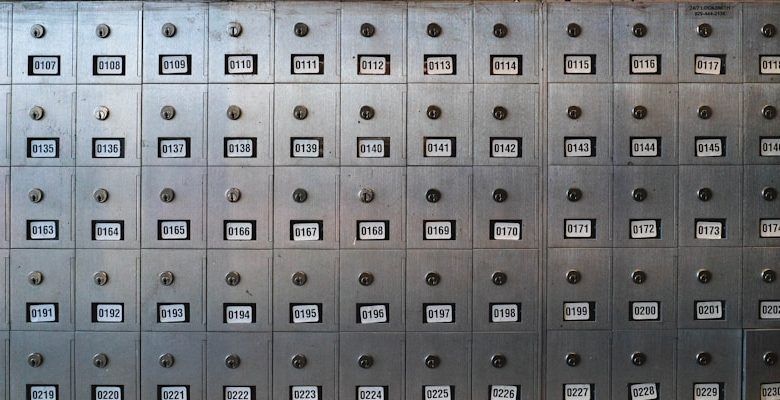How Crypto Wallets Work: A Deep Dive into Digital Asset Storage

- Understanding the basics of crypto wallets
- Exploring the different types of crypto wallets
- Security measures in place to protect your digital assets
- The role of private keys and public addresses in crypto storage
- Transferring and receiving digital assets with your crypto wallet
- Future trends in crypto wallet technology
Understanding the basics of crypto wallets
Cryptocurrency wallets are digital tools that allow individuals to store, send, and receive digital assets such as Bitcoin, Ethereum, and other cryptocurrencies. These wallets come in various forms, including software wallets, hardware wallets, and paper wallets. Each type offers different levels of security and convenience for users.
Software wallets, also known as digital wallets, are applications that can be downloaded and installed on a computer or smartphone. They are convenient for everyday use and are often free to use. However, they are more susceptible to hacking and malware attacks compared to hardware wallets.
Hardware wallets, on the other hand, are physical devices that store the user’s private keys offline. This makes them less vulnerable to online threats, making them a more secure option for storing large amounts of cryptocurrencies. However, hardware wallets can be more expensive and less convenient to use than software wallets.
Paper wallets are another option for storing cryptocurrencies. They involve printing out the user’s private and public keys on a piece of paper. While paper wallets are secure from online attacks, they can be easily lost, damaged, or stolen, making them a less popular choice for storing cryptocurrencies.
Understanding the basics of crypto wallets is essential for anyone looking to invest in cryptocurrencies. By choosing the right type of wallet based on their needs and preferences, users can ensure the security and accessibility of their digital assets. Whether it’s a software wallet for convenience, a hardware wallet for security, or a paper wallet for offline storage, there are options available for every type of cryptocurrency investor.
Exploring the different types of crypto wallets
When it comes to crypto wallets, there are several different types to choose from depending on your needs and preferences. The most common types include hardware wallets, software wallets, and paper wallets.
Hardware wallets are physical devices that store the user’s private keys offline, making them less vulnerable to hacking or cyber attacks. These wallets are considered one of the safest options for storing digital assets securely. They often come in the form of USB drives or smart cards.
Software wallets, on the other hand, are applications or programs that can be downloaded and installed on your computer or mobile device. They are convenient and easy to use, but they are also more susceptible to hacking and malware attacks compared to hardware wallets. Examples of software wallets include desktop wallets, mobile wallets, and online wallets.
Paper wallets are a form of cold storage where the user’s private keys are printed on a physical piece of paper. While paper wallets are not as convenient as hardware or software wallets, they are considered one of the most secure options for long-term storage of digital assets. Paper wallets are often used for storing large amounts of cryptocurrencies that are not frequently accessed.
It’s important to choose a crypto wallet that suits your individual needs and provides the level of security you require. Whether you opt for a hardware wallet, software wallet, or paper wallet, make sure to do your research and choose a reputable provider to ensure the safety of your digital assets.
Security measures in place to protect your digital assets
When it comes to safeguarding your digital assets, security measures play a crucial role in ensuring that your cryptocurrency holdings are protected from unauthorized access and cyber threats. Crypto wallets utilize a variety of security features to keep your assets safe and secure:
- Encryption: One of the fundamental security measures used in crypto wallets is encryption. This technology encodes your private keys and transaction data, making it difficult for hackers to gain access to your funds.
- Multi-factor authentication: Many crypto wallets offer multi-factor authentication as an additional layer of security. This typically involves a combination of something you know (password), something you have (mobile device), and something you are (biometric data).
- Hardware wallets: For those seeking the highest level of security, hardware wallets are physical devices that store your private keys offline. This significantly reduces the risk of hacking or unauthorized access.
- Backup and recovery options: To prevent loss of funds due to device failure or theft, crypto wallets often provide backup and recovery options. This allows you to restore your wallet and access your assets in case of an emergency.
By implementing these security measures, crypto wallets offer a robust defense against cyber threats and ensure that your digital assets remain safe and secure. It is essential to choose a reputable wallet provider and follow best practices for security to protect your investments effectively.
The role of private keys and public addresses in crypto storage
Private keys and public addresses play a crucial role in the storage of cryptocurrencies. A private key is a secret alphanumeric code that allows the owner to access and manage their digital assets. It acts as a password and must be kept confidential to prevent unauthorized access to the funds. On the other hand, a public address is a cryptographic hash of the user’s public key. It serves as the destination for receiving funds and can be freely shared with others.
When a transaction is initiated, the sender uses their private key to sign it cryptographically. This signature is verified using the sender’s public address, ensuring that only the rightful owner can authorize the transfer of funds. The public address of the recipient is also required to complete the transaction, as it serves as the destination where the funds will be sent.
It is essential to understand the relationship between private keys and public addresses when using a crypto wallet. The private key is used to generate a public address, which in turn is used to receive funds. Without the private key, the funds stored in a wallet cannot be accessed, highlighting the importance of keeping this information secure. By safeguarding the private key and sharing the public address selectively, users can ensure the safety of their digital assets.
Transferring and receiving digital assets with your crypto wallet
One of the key features of a crypto wallet is the ability to transfer and receive digital assets securely. When you want to send digital assets to someone else, you can do so by entering their wallet address in your wallet’s interface. This address acts as a destination for the assets you are sending. Once you confirm the transaction, it is added to the blockchain for verification.
On the other hand, when you want to receive digital assets from someone else, you need to provide them with your wallet address. This address is a unique identifier for your wallet on the blockchain network. Once the sender initiates the transaction, you will see the incoming assets in your wallet balance.
It is important to note that each transaction incurs a small fee, known as a transaction fee, which is paid to the miners who verify and add the transaction to the blockchain. This fee ensures that your transaction is processed in a timely manner and helps maintain the security and integrity of the blockchain network.
Future trends in crypto wallet technology
The future of crypto wallet technology is an exciting and rapidly evolving landscape. As the demand for secure and user-friendly digital asset storage solutions continues to grow, developers are constantly innovating to meet these needs. Some of the key trends that we can expect to see in the coming years include:
- Enhanced security features: With the increasing value of cryptocurrencies, there will be a greater emphasis on improving security measures within crypto wallets. This may include the integration of biometric authentication, multi-signature capabilities, and advanced encryption techniques.
- Interoperability: As the number of cryptocurrencies and blockchain networks continues to expand, there will be a greater need for wallets that can support a wide range of digital assets. Interoperable wallets that can seamlessly interact with different blockchains will become increasingly important.
- Improved user experience: User-friendly interfaces and intuitive design will be a key focus for future crypto wallets. Developers will look to streamline the process of storing and managing digital assets, making it easier for newcomers to the space to get started.
- Decentralization: With the growing interest in decentralized finance (DeFi) and the importance of self-custody, we can expect to see more emphasis on decentralized wallet solutions. These wallets will give users full control over their private keys and funds, without the need to rely on third parties.
- Integration with other financial services: In the future, we may see crypto wallets that are seamlessly integrated with other financial services, such as lending platforms, staking services, and decentralized exchanges. This will provide users with a more holistic financial experience within a single wallet interface.
Overall, the future of crypto wallet technology looks promising, with a focus on security, interoperability, user experience, decentralization, and integration with other financial services. As the industry continues to mature, we can expect to see even more innovative developments in the world of digital asset storage.



